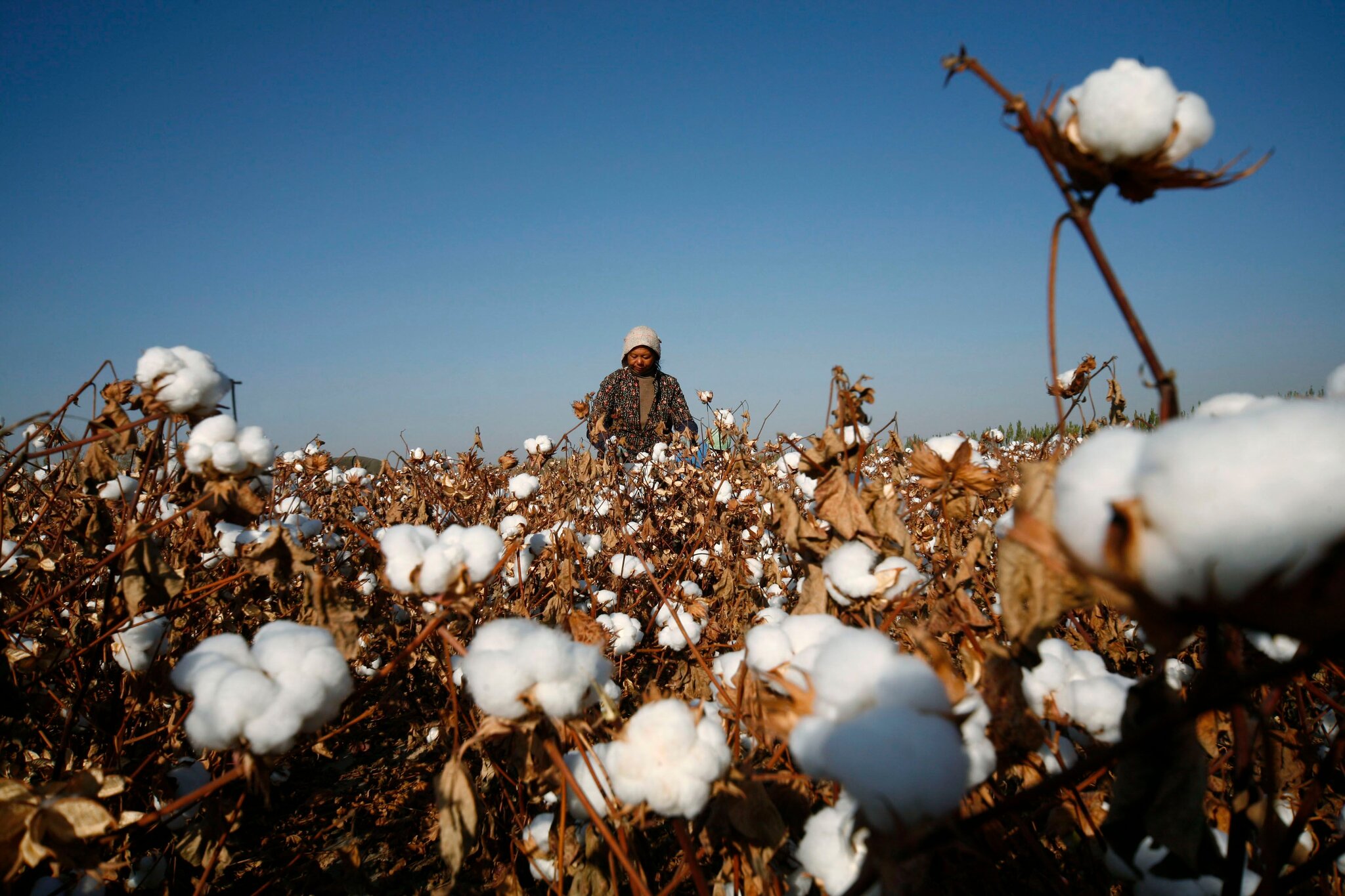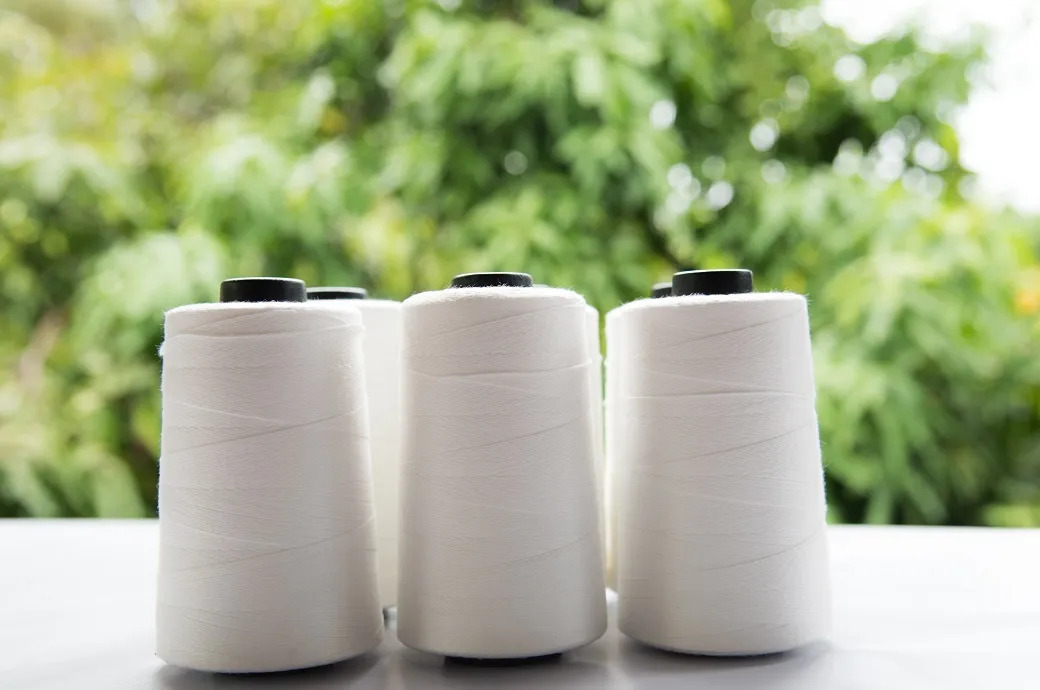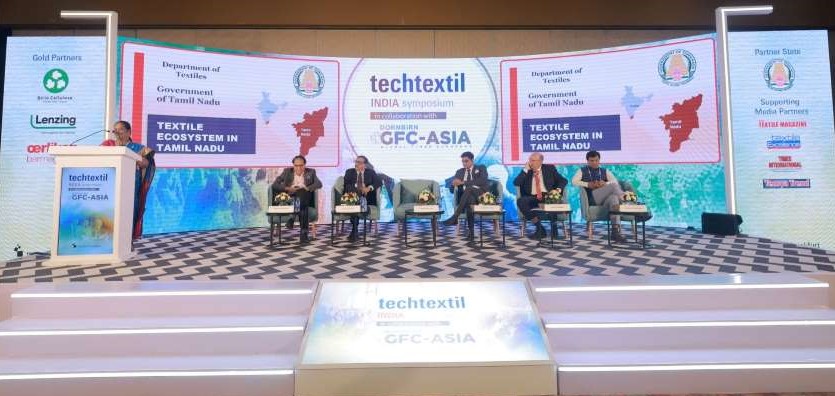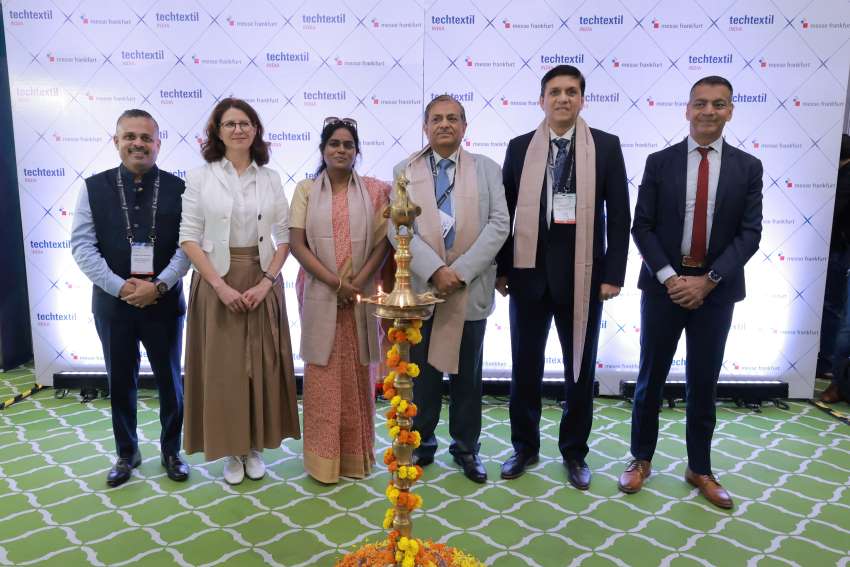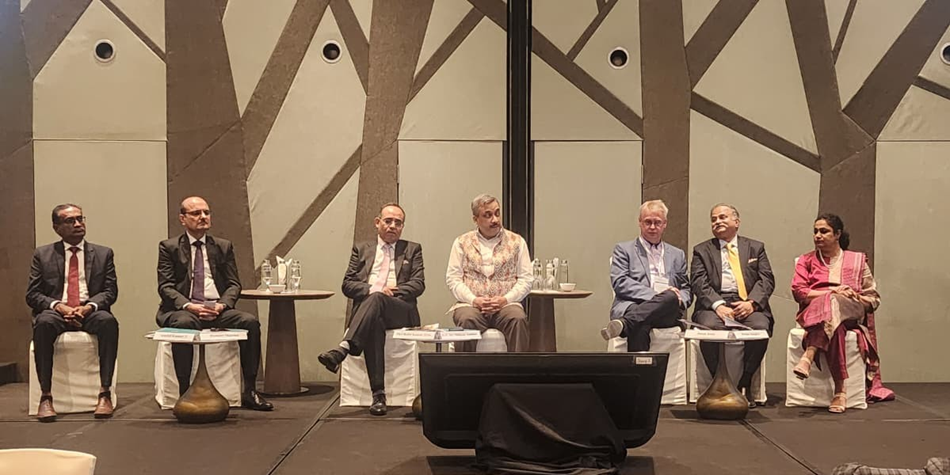FW
"Textile sustainability has been gaining traction lately and putting a lot of pressure on fashion companies to take sustainable route. While some go by standards organisations like GOTS or ISO, to learn more about the supply chains of their favourite brands, we still don’t have scientific evidence to show exactly where a garment has come from. If a technology was developed to do this, it would quickly impact the level of sustainability within the fashion industry, and would quickly percolate among other industries as well."

Textile sustainability has been gaining traction lately and putting a lot of pressure on fashion companies to take sustainable route. While some go by standards organisations like GOTS or ISO, to learn more about the supply chains of their favourite brands, we still don’t have scientific evidence to show exactly where a garment has come from. If a technology was developed to do this, it would quickly impact the level of sustainability within the fashion industry, and would quickly percolate among other industries as well. Imagine a Fiber Testing Kit, that any consumer could purchase, bring home to their closet, and run a quick analysis on their favourite T-shirt. Anyone with the ability to test the fibre, theoretically, could hold companies accountable for their sourcing practices. An invention like this could be highly disruptive to the fashion industry.
Time tested methods

Around 40 years back, DNA profiling was developed by British-born Sir Alec Jeffreys, a geneticist and professor at the University of Leicester. In California, biochemist Kary Mullis, learned how to link and repeat DNA (polymerase chain reaction or PCR), while trying to find the point of genetic mutations for hereditary diseases. Both extraordinary minds made incredible breakthroughs for our knowledge and understanding of the human genome. DNA testing was implemented into law enforcement’s forensic teams within two years of the discoveries and has since been used worldwide to prove criminal acts, as well as exonerate innocent suspects.
Many fibres are traceable through the forensic analysis. Once analysts determine if the thread is natural, manufactured, or mixed, they can usually identify the product it came from – a rug; a sweater. This is again often used by law enforcement and prosecutors to seek justice for crimes. Fibre forensic analysis is usually debated in court due to the mass of products created. The amount of production of a particular manufactured fibre and its end use, influence the degree of rarity of a given fibre. Unlike a fingerprint, there is no way to tell two fibres of the same origin apart. Fibre forensics can only be used as evidentiary support to corroborate other facts. Still this technology hasn’t been quite successful.
Molecular Tagging
In a world of ever-growing technological advancements, this could be a logical next step in ensuring more sustainable supply chains. Molecular tagging of genes can identify and verify products creating a forensic proof of origin for more sustainable fashion. It tags fibres by matching batches to origins already known. Once a supplier is tested and proven to be sustainable, SigNature(™)T technology can then continue to tag future batches. Although this gene tagging method may not be able to track individual fibres from anywhere in the world yet, many sustainable fashion organisations have mapped out the production process for consumers.
Organisational efforts
Made-by, a non-profit organisation dedicated to the fashion industry’s environmental and social conditions, has laid out a seed-to-shelf roadmap. Made-By works with sustainable brands to standardise the production process, and mainstream sustainability advancements. Over 50 industry experts consulted on the typical methods, and six large fashion brands have now joined, including G-Star and Ted Baker. The organisation is creating an awareness among consumers to learn more about the manufacturing side of where their garments come from. The fibre testing system could back up these organisations’ endeavours by proving their process is safe, environmental, and sustainable.
A team of researchers at Stanford University has developed skin-like fabric that cools the body more efficiently. In the latest edition of Science journal, researchers have reported they used nanoporous polyethylene to develop a textile material that aides radiative cooling while maintaining breathability, wicking and necessary mechanical strength. According They have also devised an instrument to simulate skin temperature. The use of nanoporous polyethylene fabric resulted in the lowering of skin temperature by about 2.7 degree centigrade when compared with another commonly used next-to-skin fabric. The fabric effectively cools the person which makes cooling the building unnecessary thereby saving energy.
Nanoporous plastic textile moves the body heat as infrared rays due to the nanostructured polyethylene. Researchers modified the polyethylene material that is commonly used in battery development which enables it to be opaque to visible light but transparent to infrared rays so that the heat can be dissipated. To Shanhui Fan, Professor of electrical engineering at Stanford University, who co-authored the study, says this research can lead to the development of new materials that can trap or let go infrared radiations.
With mounting opposition, US President Barack Obama is desperately trying to pass the Trans-Pacific Partnership (TPP) trade deal before his term ends in 2017. Both major party presidential nominees, former Secretary of State Hillary Clinton and Donald Trump have publicly stated that they would not sign the agreement if they become president. Though opposition to TPP has typically focused on the threat of losing American jobs, another concern that is being seen is the loss of sovereignty through a byzantine process known as investor-state dispute settlement (ISDS).
ISDS allows companies to sue states using private, three-man corporate tribunals as judges. The corporate tribunal process was originally intended to protect corporations from having their property nationalized by foreign countries. By allowing companies to recover lost funds, it was thought, states would be less likely to nationalize foreign assets. As a result, foreign investment would increase into countries in desperate need of it.
Under current practice, ISDS has become a means for transnational corporations to pressure governments to change health and safety regulations and let corporate executives walk on criminal charges. According to a recent study of the ISDS process, the system was designed to deal primarily with theft by autocrats, but, in the majority of cases today, businesses are suing democracies for enacting regulations. The Agency also found instances in Egypt, El Salvador and Indonesia where the threat of ISDS actions by a business led to criminal charges being dropped against company executives.
The ongoing trend of seasonless apparel does not exclude denim. From August 30 to 31, global mills exhibited a combination of core products along with a huge quantity of brand new washes and blends for S/S 18 at Bluezone, the denim section of Munich Fabric Start.
It was of mix show’s at the ‘keyhouse’ with a full house of fiber, technology and chemical companies that came together to offer the denim market seasonless solutions to do better business. YKK product designer Ina Kaiser said that winter is not cold and summer is not hot. There’s no more light colors for spring, dark colors for winter mentality. Apparel collections don’t drastically change from season to season. At Munich Fabric Start, the trims company showcased it’s A/W 17-18 range.
Kaiser explained that the call for seasonless or transitional, looks is getting into trims as well. In women’s apparels, accessories are light and pastel (mint, pink, lavender) with a hint of luminosity through opalescent and iridescent finishes. The theme is pretty for spring or dreamy for winter. Badges are at the forefront of men’s trims, with many manufacturers focusing on scouting and camping motifs—a concept that ties together nicely with autumnal color ways and summer brights.
With patchwork and DIY details expected to remain popular in denim, YKK is a collection of items inspired by retro haberdashery. For women, rivets are made to resemble 4-hole buttons. Patches of embossed leather are sewn onto the tops of frontier pockets, and funnel-shaped buttons and flat buttons are brushed with warm vintage yellow and green.
Shiny copper rivets, zippers and buttons add a jewelry-like effect to women’s. Tiny rivets and miniature bees are used for decorative items. Letters of the alphabet are reworked as rivets. The monogram theme is carried into belt loop ornaments that can be sewed.
India saw a decline in exports of woolen yarn, fabric and made-ups by 48 per cent and woolen garments by nine per cent in the first quarter of the current financial year. Demand for woolen garments has been falling due to global warming as well as sluggish orders from Europe. The price of 20.5 micron wool has risen to Rs 800 or Rs 900 from Rs 600 or Rs 700 a kilo two years ago. However, manufacturers find it difficult to pass this on to consumers because it might further affect demand.
India depends on imported wool from Australia for making garments and shawls. Domestic wool is used for blankets and rugs. Large firms catering to niche markets have been able to beat the slowdown in demand with the help of innovation and marketing strategies but medium and small players are gasping for breath.
During pre-winter months, wool fabric is in high demand by the Kashmiri artisans, who make embroidered garments. But business of mid-size manufacturers in Ludhiana and Amritsar has been hit by the turbulence in Kashmir. This year they have had to run their factories at one-third capacity. The unrest in the Kashmir Valley has wiped out nearly 50 per cent of domestic demand.
A $30 million dollar expansion at Invista’s fiber manufacturing plant in South Carolina will enable the company to rapidly respond to small-lot, carpet fiber demands. The investment represents the industry’s first-ever offering of one-step, small-lot capability specifically for solution-dyed nylon 6,6.
Mill customers and the design community rely on Invista to offer a palette of hundreds of solution-dyed nylon 6,6 colors for each of their unique design preferences. The new technology will expand Invista’s capability to offer sophisticated color families while at the same time improving service.
Invista developed the innovative, proprietary small-lot technology by working closely with equipment manufacturer Truetzschler, which will supply Invista with the highest quality of BCF extrusion technology for this important expansion.
The variety of small-lot nylon 6,6 fibers will initially be offered under Invista’s Antron Lumena brand to serve the global, growing solution-dyed nylon BCF markets.
US-based Invista, is one of the world's largest integrated producers of intermediate chemical products, polymers and fibers, primarily for nylon, spandex and polyester applications. Invista is the owner of the brands Lycra, Coolmax, Cordura, Stainmaster and Antron. The company’s cutting-edge nylon, spandex and polyester technologies are used to manufacture apparel, carpets, automobile components and other products.
In order to strengthen sales and after sales services, analyse industry and product trends, expand the business and further improve customer satisfaction, Huntsman Textile Effects has streamlined its India commercial organization. With a dedicated sales teams covering the North, Central and South India and Sri Lanka regions compared to North and South regions, the teams are now more geographically aligned with Huntsman Textile Effects’ customer base in India. Being more focused on a smaller region will improve operational efficiency, customer focus and response time for each sales team as they benefit from more agile and quicker decision-making.
Headquartered in Mumbai, the sales teams will be supported by a full-fledged technical resource team and regional marketing team aimed at enhancing the performance of each function. These teams will also provide dedicated strategic marketing and higher level of after sales support.
Recently Huntsman Textile Effects has also made significant investments in R&D and technical services. The increased capabilities of its R&T and technical service laboratories in its Lighthall Corporate office complex will improve sales and after sales service offerings.
To boost investment and meet growing demand from the synthetic textiles industry, the government is looking at lowering excise duty on man-made fibre (MMF). The Ministry of Textiles is contemplating a cut in excise duty on MMF in the new policy scheduled to be announced in a month’s time. While cotton fibre attracts zero duty, a 10 per cent excise duty is levied on MMF. On several occasions, the MMF industry had asked the government to exempt MMF from excise duty, arguing that the garments produced by them are primarily used by economically weaker sections of society.
The textile commissioner, Kavita Gupta too has affirmed the government is considering a cut in MMF excise duty. Gupta is speaking on the sidelines of TAG 2016, the 8th Annual Conference on Textile and Apparel Industry organised by FICCI. India's fibre demand is likely to double in 10 years with the government increasing impetus on textiles sector for both domestic consumption and exports of readymade garments. India's cotton fibre output currently stands at 6.5 billion kg, which may go up to 8 billion kg by 2025.
The Bangladesh government’s policy of promoting readymade garment exports has created an anti-export bias for other sectors and put hindrances in competition and product diversification in the non- RMG sectors, says a Asian Development Bank (ADB) report.
he report titled ‘Country Diagnostic Study: Consolidating Export-led Growth’ recommends the government identify barriers to other productive sectors and eliminate anti-export bias against non-RMG export for ensuring economic diversification. The ADB report recommended withdrawal of some RMG sector supports which have outlived their useful lives.
‘As a general principle, incentives for new industries need to be time-bound while these [the RMG sector incentives] are not. Special incentives, such as corporate income tax exemption or tax holidays for imported machinery, need to be removed,’ the report said.
Metropolitan Chamber of Commerce and Industry president Syed Nasim Manjur feels the government’s wrong policy discouraged non-RMG sectors’ growth. He said, that the government provided zero-tariff facility for importing fire safety equipments for RMG sector but imposed up to 65 per cent duty on the items for the non-RMG sectors. The industry president said that the RMG sector enjoys various tax benefits including incentive but other sectors are not entitled for the benefits that lead an entrepreneur shutting his/her non-RMG units. He demanded a long-term sustainable support for the non-RMG sectors.
Textile manufacturers in Egypt prefer US cotton to local Egyptian cotton. The reason: deteriorating quality of Egyptian cotton. Extra-long staple cotton like Giza 86 and Giza 88 is being mixed with medium-staple types like Giza 90. Therefore, US exports of lint cotton to Egypt increased by 30 per cent in 2015 compared to 2014. Cotton production in Egypt is made up of about 90 per cent extra-long and long-staple cotton, while 10 per cent are short and medium staple varieties.
Some manufacturers choose US Pima cotton as a better alternative to Egyptian cotton due to its higher quality. Although the prices of US Pima cotton are higher than Egyptian extra-long staple cotton, the deterioration of the Egyptian extra-long staple cotton has forced local spinners to rely on Pima cotton to produce high quality yarn.
Egypt is famous for its extra-long and long-staple cotton, which are highly praised as the longer length of cotton fiber results in finer fabric. However, the extra-long and long-staple cotton are unsuitable for many textile operations which prefer short- and medium-staple varieties.
Egyptian cotton has been in decline for some years and it has accelerated after cash subsidies were removed. Many farmers replaced cotton acreage with rice.

